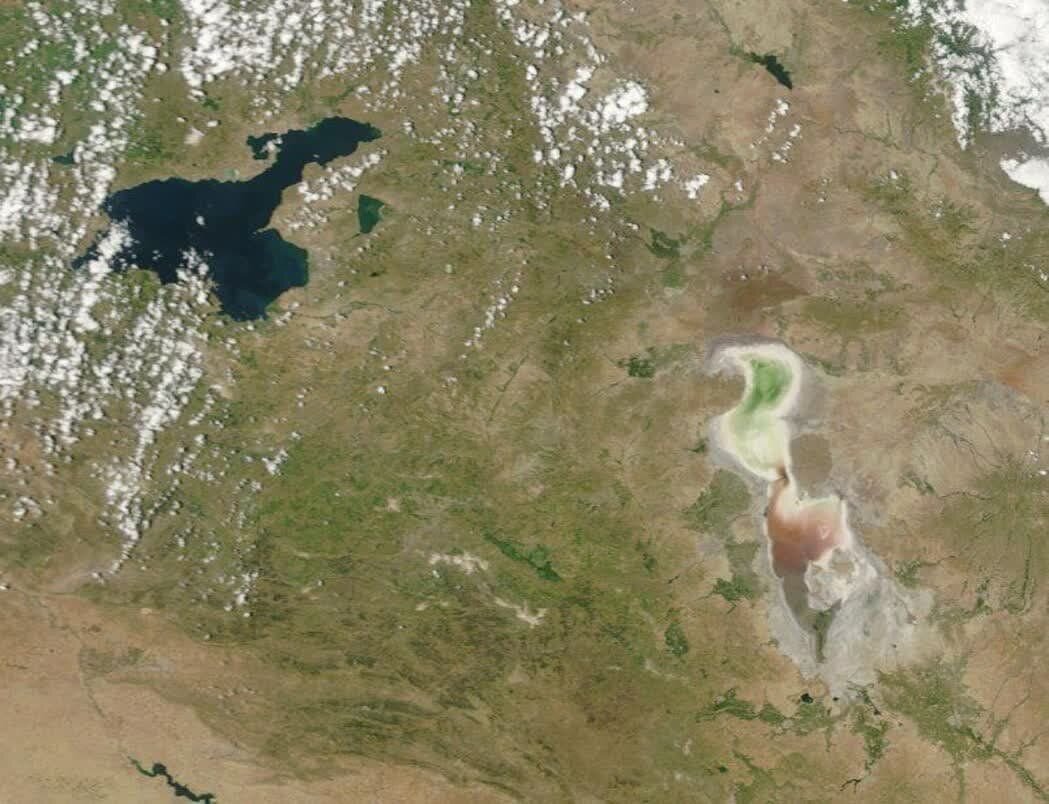Water transfer from Lake Van to Lake Urmia on agenda

TEHRAN - Research and academic studies are being carried out on transferring water from Lake Van in Turkey to help revive Lake Urmia which has been drying up in recent years, MP Mohammad-Reza Mirtajeddini has said.
"Four universities have conducted scientific studies and research to transfer water from Lake Van to Lake Urmia which are 160 kilometers away from each other,” Mirtajeddini pointed out.
Moreover, "Within the past two months, several meetings have been held in the parliament discussing the situation of Lake Urmia. The first vice president, the head, and the secretary of the Lake Urmia restoration headquarters were following up on the work. Most of the hardware projects have been done out of all the plans and proposals.”
Lake Urmia restoration headquarters needs 23,000 billion rials (about $46,000) this year, part of which has been paid out and the rest will be allocated, the MP added.
To implement the restoration projects, water is needed. Due to the low rainfall in the past, water was not released from the KaniSib dam. However, thanks to the recent precipitation, the situation has improved, and the water should be released as soon as possible.
Water transfer project
Lake Urmia, located in the northwest of Iran, was once the most extensive permanent hypersaline lake in the world. Unsustainable water management in response to increasing demand together with climatic extremes has given rise to the lake's depletion.
The lake’s restoration program was established in 2013 and aims to restore the lake within a 10-year program.
The Kanisib tunnel is the most important structure for transferring water to Lake Urmia to prevent it from drying out.
On February 24, the first phase of a national project to transfer water from the Kanisib Dam to Lake Urmia, northwestern West Azarbaijan province, came on stream.
The construction of a tunnel with a length of 36 kilometers to transfer water from the Kanisib Dam to Lake Urmia started in 2015, IRNA reported.
Some 35 trillion rials (about $77 million) have been spent on the project.
In the first phase, 300 million cubic meters of water are projected to enter Lake Urmia every year.
The second phase that is going to come on stream in the current Iranian calendar year (starting March 21) will increase the volume of water to 600 million cubic meters.
Lake Urmia started to dry up in the 2000s, and although it revived at some point over the past few years, it is in serious danger these days.
The lake is the largest lake in West Asia and the sixth-largest Salt Lake in the world with a water surface area of 5,000 to 6,000 square kilometers.
Some 5 trillion rials (about $11 million) have been earmarked for speeding up the implementation of the Lake Urmia revival plan.
The lake is designated for the List of Wetlands of International Importance, Ramsar Site, as well as a UNESCO World Biosphere Reserve, which is a protected area with the aim of conserving nature and culture in the region and community development.
However, the water in the lake has been decreasing during the past years. The water surface area shrank by approximately 80 percent of its (once-large) original size at the end of the dry season in 2013 and by approximately 70 percent at the end of the rainy season of the same year.
Restoration measures caused the level of Lake Urmia to reach 1278 meters in 1995 and 1274 meters in 2005 and finally, it stood at 1270 meters in 2015.
Based on the studies and according to the statement of the Lake Urmia Restoration Program, 18 percent of the drying was due to climate change and 82 percent was due to the mismanagement of water resources in the catchment area, Somayeh Rafiei, a member of the Majlis (Iranian Parliament), has said.
The water level of Lake Urmia is supposed to reach 1274.1 by 2028.
MT/MG
